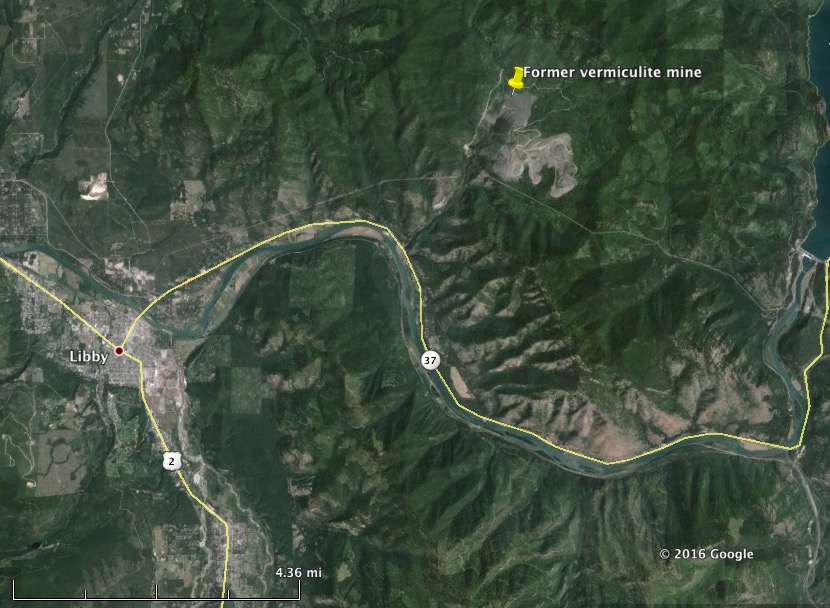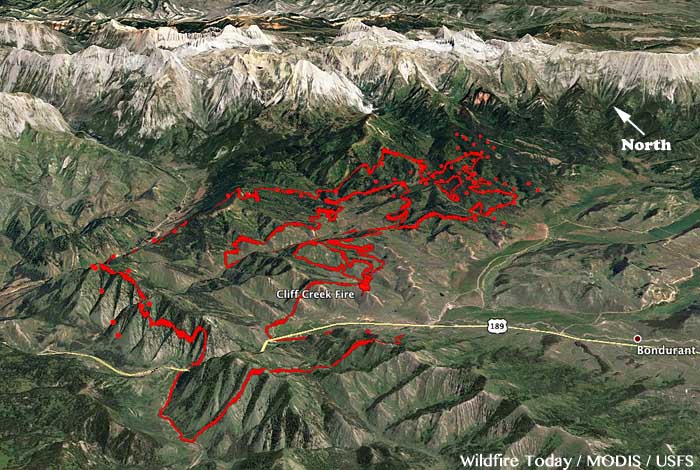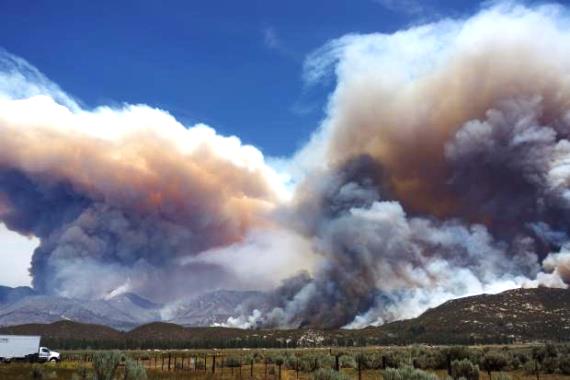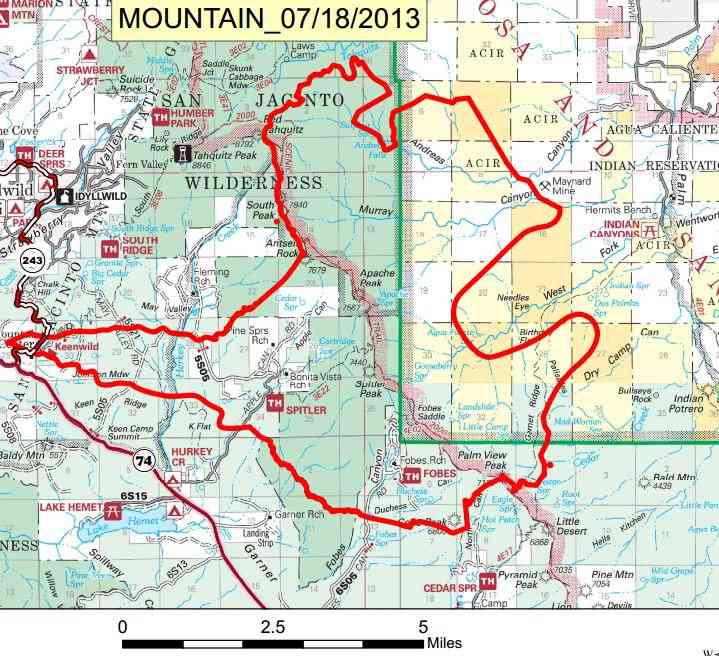The U.S. Forest Service is trying to fill positions on a very specialized 10-person wildland firefighting crew. The mission of the crew would be to suppress wildfires that occur near a mining site at Libby, Montana where vermiculite contaminated with asbestos was extracted by the Zonolite Corporation and later by W.R. Grace from 1919 until the mine closed in 1990. The asbestos became airborne and deposited in the adjacent forest and other areas. Wastes from the mine were used throughout Libby in many public places such as school tracks, public parks, baseball fields, as insulation in public buildings and schools.

The area is now designated by the Environmental Protection Agency as a Superfund Site. The first public health emergency ever declared by the EPA was the Libby asbestos site in 2009. Hundreds of asbestos-related disease cases have been documented in the small community, which covers the towns of Libby and Troy.
Below are excerpts from an article at The Western News:
…As part of a previous agreement, the Forest Service is responsible for fire containment and cleanup in the mine area. Libby District Ranger Nate Gassmann said having a team located in the area is critical to containing the threat of airborne asbestos if that case were to happen.
“Both agencies understand that importance if the community of Libby and the surrounding area is affected by fire in someway,” Gassmann said. “We do not take this as a light consideration for the Forest Service.
Christina Progess, remedial project manager for Operable Unit 3, known also as the former W.R. Grace mine site, said that the EPA worked hand-in-hand with the Forest Service to develop the action plan, while state agencies like the Department of Environmental Quality and Department of Natural Resources and Conservation took support roles, providing input while the plan was under development. Progess said the plan released on Tuesday has been in the works since spring of 2016.
The team would be composed of Forest Service firefighters, according to the plan, but filling that roster has already proven difficult. According to the memo, Forest Service Fire Managers have discussed firefighting within OU3 with Forest Service firefighters and “most have indicated that they would refuse to work in OU3 due to the presence of (Libby Amphibole asbestos) in forest duff and tree bark.”
Gassmann said while efforts to build the team has been met with hurdles, some support positions have already been filled and the Forest Service may begin looking to outside sources to compose the 10-person squad.
Gassman also said the Forest Service has provided forest fire containment in the mining area before, including two incidences in 2015, although those fires totaled a .75-acre area.
“On average, we receive four fires a year” in the former mine area, Gassman said. “Sometimes you get more, sometimes you don’t.”
Progess said the EPA and Forest Service conducted a test burn earlier this year to determine the exposure levels found in the smoke and ash of a fire in the former mine area. The test burn was a small fire, she said, but the exposure levels were great.
“We had the test burn and had firefighters do some mop up in the area. We found that their exposures were well above the risk target set by the EPA,” she said.
“Exposures were significant and of concern.”
Progess said that if a large forest fire were to tear through the former mine site, the EPA is currently unable to quantify how far or how concentrated the mobilized asbestos would travel through smoke and ash.
“There’s so many variables that would factor into it, from wind to topography to the relative humidity,” she said. “We don’t have any way of understanding what the concentrations would be to residents in Libby but the best way to minimize exposure is to prepare to stop a fire.”
Gassmann said while the primary objective is to keep area residents safe from such asbestos exposure levels, there’s plenty of concern for the safety of the firefighting team, once that crew is assembled.
“We have a requirement to provide health and safety for our fire fighters. That’s above and beyond what you would consider a normal fire fighting activity,” he said.






















